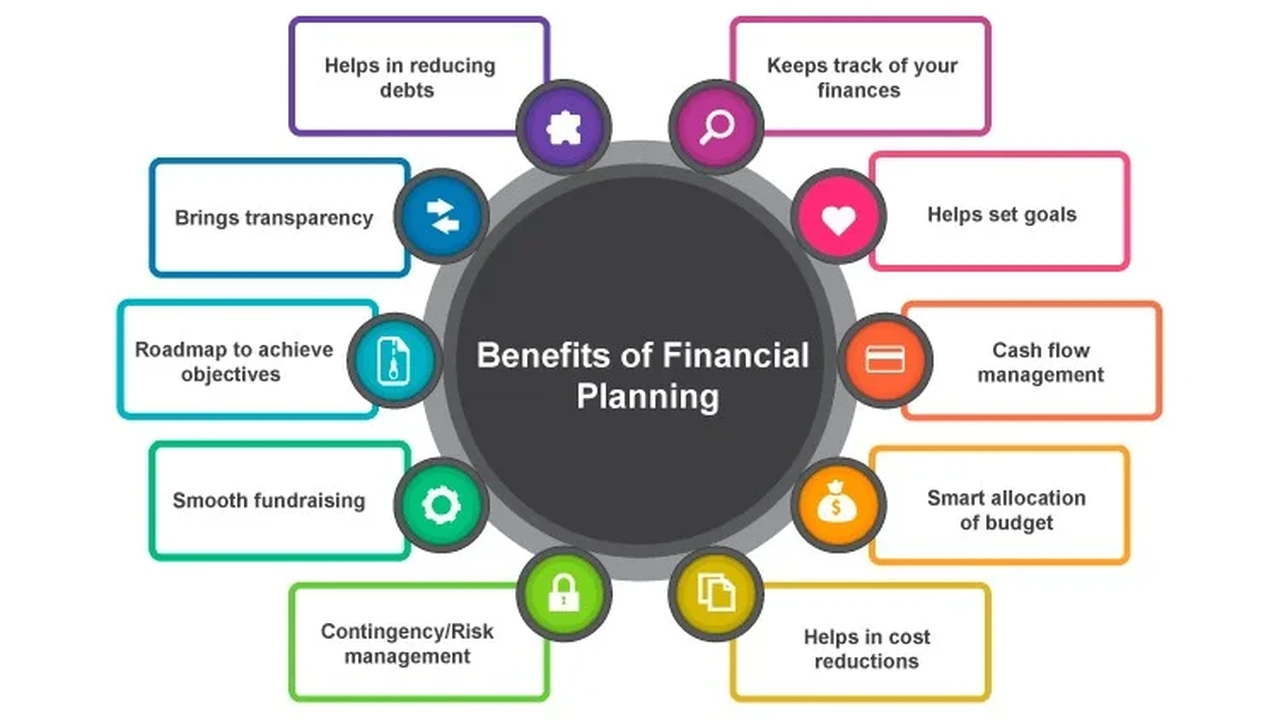5 Best Retirement Accounts for Early Savers
Discover the top 5 retirement accounts ideal for individuals looking to start saving early for their golden years.

5 Best Retirement Accounts for Early Savers
Why Early Retirement Savings Matter for Your Future
Hey there, future millionaire! Ever thought about what your golden years will look like? Will you be jet-setting around the world, enjoying leisurely mornings, or perhaps finally tackling that passion project you've always dreamed of? Whatever your vision, one thing's for sure: it's going to take some serious financial muscle to get there. And the absolute best time to start building that muscle? Right now, especially if you're in your 20s or 30s. We're talking about the magic of compound interest, folks. It's not just a fancy financial term; it's your best friend when it comes to growing your wealth over decades. Starting early means your money has more time to grow, multiply, and snowball into a substantial nest egg. Think of it like planting a tiny seed today that grows into a mighty oak tree by the time you're ready to retire. The longer that seed has to grow, the bigger and stronger the tree becomes. So, let's dive into the best retirement accounts that can help you kickstart your journey to financial freedom.Understanding Retirement Account Types and Their Benefits
Before we jump into the top 5, let's quickly break down the two main flavors of retirement accounts you'll encounter: tax-deferred and tax-exempt. This distinction is super important because it dictates when you pay taxes on your contributions and earnings.Tax-Deferred Accounts: Pay Taxes Later
With tax-deferred accounts, like a traditional 401(k) or Traditional IRA, your contributions are typically made with pre-tax dollars. This means the money you put in reduces your taxable income in the year you contribute, which can lead to a nice tax break right now. Your investments grow tax-free over time, and you only pay taxes when you withdraw the money in retirement. This is great if you expect to be in a lower tax bracket in retirement than you are now.Tax-Exempt Accounts: Pay Taxes Now, Enjoy Tax-Free Growth Later
On the flip side, tax-exempt accounts, like a Roth 401(k) or Roth IRA, are funded with after-tax dollars. You don't get an upfront tax deduction, but here's the kicker: all your qualified withdrawals in retirement are completely tax-free. This is a fantastic option if you believe you'll be in a higher tax bracket in retirement, or if you just love the idea of never having to worry about taxes on your retirement income again. It's like paying your dues upfront and then enjoying a lifetime of tax-free financial freedom.Top 5 Retirement Accounts for Early Savers: A Detailed Comparison
Alright, let's get to the good stuff! Here are the five best retirement accounts that every early saver should consider, along with their features, benefits, and ideal use cases.1. Roth IRA: Your Tax-Free Retirement Powerhouse
The Roth IRA is often considered the holy grail for early savers, and for good reason. It's funded with after-tax dollars, meaning your contributions don't reduce your current taxable income. However, the magic happens in retirement: all qualified withdrawals, including your earnings, are completely tax-free. This is incredibly powerful, especially if you're young and expect your income (and thus your tax bracket) to increase significantly over your career. Imagine all those years of growth, completely untouched by the taxman!
Key Features and Benefits of Roth IRA:
- Tax-Free Withdrawals in Retirement: This is the biggest draw. No taxes on qualified withdrawals after age 59½ and after the account has been open for at least five years.
- Contribution Flexibility: You can withdraw your contributions (not earnings) at any time, tax-free and penalty-free, for any reason. This offers a great emergency fund backup, though it's generally not recommended to dip into retirement savings.
- No Required Minimum Distributions (RMDs) for Original Owner: Unlike traditional IRAs, you don't have to start taking money out at a certain age (currently 73). This gives you more control over your money and allows it to continue growing.
- Estate Planning Benefits: You can pass on a tax-free inheritance to your beneficiaries.
Ideal Use Case for Roth IRA:
The Roth IRA is perfect for young professionals just starting their careers, those in lower tax brackets now but expecting higher ones in the future, and anyone who values tax-free income in retirement. It's also a great option if you want the flexibility to access your contributions in an emergency.
Contribution Limits and Income Phase-Outs for Roth IRA (2024):
- Contribution Limit: $7,000 (under age 50).
- Income Phase-Outs: For single filers, the ability to contribute directly to a Roth IRA begins to phase out at a Modified Adjusted Gross Income (MAGI) of $146,000 and is eliminated at $161,000. For married filing jointly, the phase-out range is $230,000 to $240,000. If your income is too high, you might consider the 'Backdoor Roth IRA' strategy.
Recommended Roth IRA Providers and Their Offerings:
When choosing a Roth IRA provider, look for low fees, a wide range of investment options (ETFs, mutual funds, individual stocks), and user-friendly platforms. Here are a few top contenders:
-
Fidelity:
- Pros: Excellent research tools, extensive selection of commission-free ETFs and mutual funds (including Fidelity's own zero-expense-ratio index funds), robust customer service, and a user-friendly platform suitable for beginners and experienced investors.
- Cons: Can be overwhelming for absolute beginners due to the sheer number of options.
- Typical Fees: $0 commission for online stock, ETF, and options trades. No annual fees for IRAs. Expense ratios for mutual funds vary.
- Best For: Investors who want a wide range of investment choices and strong research tools.
-
Vanguard:
- Pros: Renowned for its low-cost index funds and ETFs, which are ideal for long-term, passive investing. Strong commitment to investor-first principles.
- Cons: Interface can feel a bit dated compared to competitors; fewer active trading tools.
- Typical Fees: $0 commission for online stock and ETF trades. No annual fees for IRAs. Very low expense ratios for their own funds.
- Best For: Cost-conscious investors focused on long-term, passive investing with index funds.
-
Charles Schwab:
- Pros: Comprehensive platform with a wide array of investment products, excellent customer service, strong research, and commission-free trading. Offers fractional shares, making it easier to invest with smaller amounts.
- Cons: Some users find their platform less intuitive than Fidelity's.
- Typical Fees: $0 commission for online stock, ETF, and options trades. No annual fees for IRAs.
- Best For: Investors seeking a well-rounded brokerage with good research and customer support.
2. 401(k) or 403(b): Employer-Sponsored Retirement Power
If your employer offers a 401(k) (for for-profit companies) or a 403(b) (for non-profit organizations, schools, and hospitals), this should be your first stop, especially if they offer a matching contribution. An employer match is essentially free money – a 100% return on your investment from day one! Don't leave free money on the table!
Key Features and Benefits of 401(k)/403(b):
- Employer Match: The biggest perk! Many employers will match a percentage of your contributions, often 50% or 100% up to a certain limit (e.g., 3-6% of your salary).
- High Contribution Limits: You can contribute significantly more to a 401(k) than an IRA, allowing for faster wealth accumulation.
- Pre-Tax Contributions (Traditional 401(k)): Contributions reduce your current taxable income.
- Roth 401(k) Option: Many plans now offer a Roth 401(k) option, allowing for tax-free withdrawals in retirement, similar to a Roth IRA.
- Payroll Deductions: Contributions are automatically deducted from your paycheck, making saving effortless and consistent.
Ideal Use Case for 401(k)/403(b):
This account is a must-have for anyone whose employer offers one, especially if there's a matching contribution. It's ideal for those who want to save a substantial amount for retirement and benefit from immediate tax deductions (Traditional) or tax-free growth (Roth).
Contribution Limits for 401(k)/403(b) (2024):
- Employee Contribution Limit: $23,000 (under age 50).
- Total Contribution Limit (Employee + Employer): $69,000.
Understanding 401(k) Providers and Investment Options:
Your 401(k) provider is chosen by your employer, so you don't get to pick it yourself. Common providers include Fidelity, Vanguard, Empower (formerly Empower Retirement), and Principal. The investment options within a 401(k) are usually limited to a selection of mutual funds, target-date funds, and sometimes ETFs. Look for low-cost index funds and target-date funds that align with your risk tolerance and retirement timeline.
-
Target-Date Funds: These are popular choices within 401(k)s. They automatically adjust their asset allocation (e.g., more stocks when you're young, more bonds as you approach retirement) over time. They are a 'set it and forget it' option.
- Example Product: Vanguard Target Retirement Funds, Fidelity Freedom Funds.
- Typical Expense Ratios: 0.08% - 0.15% for low-cost providers.
- Use Case: Ideal for hands-off investors who want a diversified portfolio that automatically rebalances.
-
Index Funds: These funds track a specific market index, like the S&P 500. They offer broad market exposure at very low costs.
- Example Product: S&P 500 Index Fund, Total Stock Market Index Fund.
- Typical Expense Ratios: 0.03% - 0.05%.
- Use Case: Investors who want broad market exposure and minimal fees.
3. Traditional IRA: Tax Deduction Today, Growth Tomorrow
The Traditional IRA is another excellent option, especially if you don't have access to a 401(k) or if you've maxed out your 401(k) contributions. Contributions to a Traditional IRA are often tax-deductible, meaning they reduce your taxable income in the year you contribute. Your investments grow tax-deferred, and you pay taxes on withdrawals in retirement. This is particularly appealing if you're in a higher tax bracket now and expect to be in a lower one during retirement.
Key Features and Benefits of Traditional IRA:
- Potential Tax Deduction: Contributions may be tax-deductible, lowering your current tax bill.
- Tax-Deferred Growth: Your investments grow without being taxed until withdrawal in retirement.
- Wide Range of Investment Options: You have full control over your investment choices, unlike a 401(k) which has limited options.
Ideal Use Case for Traditional IRA:
Great for self-employed individuals, those without access to an employer-sponsored plan, or those who want to supplement their 401(k) savings. It's also a good choice if you anticipate being in a lower tax bracket in retirement.
Contribution Limits and Deductibility for Traditional IRA (2024):
- Contribution Limit: $7,000 (under age 50).
- Deductibility: If you're not covered by a retirement plan at work, your contributions are fully deductible. If you are covered, deductibility phases out based on your Modified Adjusted Gross Income (MAGI). For single filers, the phase-out range is $77,000 to $87,000. For married filing jointly, it's $123,000 to $143,000.
Recommended Traditional IRA Providers and Their Offerings:
The same providers recommended for Roth IRAs (Fidelity, Vanguard, Charles Schwab) are excellent choices for Traditional IRAs due to their low fees, diverse investment options, and strong platforms. The investment products you'd choose would be similar: low-cost index funds, ETFs, and diversified mutual funds.
4. Health Savings Account (HSA): The Triple Tax Advantage
While not strictly a retirement account, the Health Savings Account (HSA) is often called the 'triple tax advantage' account and can be a powerful tool for retirement savings, especially for healthcare costs in your later years. To contribute to an HSA, you must be enrolled in a High Deductible Health Plan (HDHP).
Key Features and Benefits of HSA:
- Tax-Deductible Contributions: Contributions are made with pre-tax dollars, reducing your taxable income.
- Tax-Free Growth: Your investments grow tax-free.
- Tax-Free Withdrawals for Qualified Medical Expenses: Withdrawals for qualified medical expenses are completely tax-free.
- No 'Use It or Lose It' Rule: Unlike Flexible Spending Accounts (FSAs), HSA funds roll over year after year.
- Investment Opportunities: Once your balance reaches a certain threshold (e.g., $1,000), you can often invest your HSA funds, allowing them to grow over time.
- Retirement Flexibility: After age 65, you can withdraw funds for any purpose without penalty, though non-medical withdrawals will be taxed as ordinary income (similar to a Traditional IRA). This makes it a de facto retirement account.
Ideal Use Case for HSA:
Perfect for healthy individuals enrolled in an HDHP who can afford to pay for current medical expenses out-of-pocket, allowing their HSA funds to grow untouched for future healthcare costs or even general retirement spending. It's an excellent way to save for potentially significant medical expenses in retirement, which are often a major concern.
Contribution Limits for HSA (2024):
- Self-Only Coverage: $4,150.
- Family Coverage: $8,300.
- Catch-Up Contribution (Age 55+): An additional $1,000.
Recommended HSA Providers and Their Offerings:
HSA providers vary widely in terms of fees and investment options. Some are primarily for spending, while others are designed for investing. Look for providers with low maintenance fees and a good selection of investment choices.
-
Fidelity HSA:
- Pros: No monthly maintenance fees, access to Fidelity's full range of investment options (stocks, ETFs, mutual funds), excellent research tools. This is a top choice for those who want to invest their HSA funds.
- Cons: Requires you to manage your own investments.
- Typical Fees: $0 monthly fees, $0 commission for online stock/ETF trades.
- Best For: Investors who want maximum control and flexibility over their HSA investments.
-
Lively:
- Pros: User-friendly platform, competitive fees, and a wide range of investment options through TD Ameritrade (now Schwab). Good for both spending and investing.
- Cons: May have a small monthly fee if your balance is below a certain threshold (e.g., $3,000).
- Typical Fees: $2.95/month for individual accounts under $3,000. Investment fees vary based on chosen investments.
- Best For: Those who want a balance between ease of use and investment options.
-
HSA Bank:
- Pros: One of the largest and oldest HSA providers, offering a wide range of services. Good for those who primarily use their HSA for spending and occasional investing.
- Cons: Investment options are more limited and may have higher fees compared to Fidelity.
- Typical Fees: $2.50/month if balance is below $5,000. Investment fees apply.
- Best For: Individuals who prioritize a well-established provider and may use their HSA more for current medical expenses.
5. Solo 401(k): For the Self-Employed Entrepreneur
If you're self-employed, a freelancer, or a small business owner with no full-time employees (other than your spouse), the Solo 401(k) is an absolute game-changer. It allows you to contribute to your retirement both as an employee and as an employer, leading to significantly higher contribution limits than an IRA.
Key Features and Benefits of Solo 401(k):
- High Contribution Limits: You can contribute as both an employee (up to $23,000 in 2024) and as an employer (up to 25% of your net self-employment earnings). This allows for massive savings potential.
- Tax-Deferred Growth: Similar to a traditional 401(k), contributions are pre-tax and grow tax-deferred.
- Roth Solo 401(k) Option: Many providers offer a Roth option for tax-free withdrawals in retirement.
- Loan Provision: Some Solo 401(k) plans allow you to borrow from your account, though this should be a last resort.
Ideal Use Case for Solo 401(k):
This is the ultimate retirement vehicle for self-employed individuals or small business owners with no employees (or only a spouse as an employee) who want to maximize their retirement savings and take advantage of significant tax benefits.
Contribution Limits for Solo 401(k) (2024):
- Total Contribution Limit (Employee + Employer): $69,000.
- Catch-Up Contribution (Age 50+): An additional $7,500.
Recommended Solo 401(k) Providers and Their Offerings:
Setting up a Solo 401(k) can be a bit more complex than an IRA, but many brokerages make it straightforward. Look for providers with low fees and a wide range of investment options.
-
Fidelity Solo 401(k):
- Pros: No setup or annual fees, access to Fidelity's full suite of investment products, excellent customer support.
- Cons: Requires some paperwork to set up.
- Typical Fees: $0 setup/annual fees, $0 commission for online stock/ETF trades.
- Best For: Self-employed individuals who want a robust platform with diverse investment options and no ongoing fees.
-
Vanguard Solo 401(k):
- Pros: Known for its low-cost index funds and ETFs, ideal for passive investors.
- Cons: Less user-friendly interface compared to some competitors.
- Typical Fees: No setup or annual fees. Very low expense ratios for their own funds.
- Best For: Self-employed individuals who prioritize low-cost, passive investing.
-
Charles Schwab Solo 401(k):
- Pros: Comprehensive platform, good research tools, and excellent customer service. Offers a wide range of investment choices.
- Cons: Similar to Fidelity, requires some initial setup.
- Typical Fees: No setup or annual fees, $0 commission for online stock/ETF trades.
- Best For: Self-employed individuals looking for a well-rounded brokerage experience.
Building Your Retirement Savings Strategy: A Step-by-Step Guide
Now that you know the best accounts, how do you put it all together? Here's a simple strategy to maximize your early retirement savings:Step 1: Maximize Your Employer Match in Your 401(k) or 403(b)
This is non-negotiable. If your employer offers a match, contribute at least enough to get the full match. It's literally free money, and you won't find a better guaranteed return anywhere else. For example, if your employer matches 50% of your contributions up to 6% of your salary, contribute at least 6% of your salary. That's an instant 50% return on that portion of your savings!
Step 2: Max Out Your Roth IRA (or Traditional IRA if Income is High)
Once you've secured your employer match, the next step is to fully fund your Roth IRA. The tax-free growth and withdrawal flexibility make it an incredibly powerful tool for young savers. If your income is too high for a direct Roth IRA contribution, explore the 'Backdoor Roth IRA' strategy. If you prefer the upfront tax deduction, or if you're in a higher tax bracket now, a Traditional IRA might be more suitable.
Step 3: Max Out Your HSA (if Eligible) and Invest the Funds
If you're enrolled in an HDHP, contribute the maximum to your HSA. Pay for current medical expenses out-of-pocket if you can, and invest the funds within the HSA. This allows your money to grow triple tax-free, providing a powerful resource for future healthcare costs or even general retirement spending after age 65.
Step 4: Increase Your 401(k) or 403(b) Contributions Beyond the Match
After maxing out your Roth IRA and HSA, circle back to your employer-sponsored plan. Aim to contribute as much as you can, ideally up to the annual maximum. The high contribution limits of 401(k)s allow you to supercharge your retirement savings.
Step 5: Consider a Taxable Brokerage Account for Additional Savings
If you've maxed out all the above tax-advantaged accounts and still have money to save, open a regular taxable brokerage account. While these accounts don't offer the same tax benefits, they provide unlimited contribution potential and liquidity. You can invest in a wide range of assets and use this account for long-term goals beyond retirement, or as an additional layer of retirement savings.
Common Mistakes Early Savers Make and How to Avoid Them
Even with the best intentions, it's easy to stumble. Here are some common pitfalls and how to steer clear:Not Starting Early Enough: The Cost of Delay
The biggest mistake is simply not starting. Every year you delay, you lose out on valuable compounding time. Even small contributions early on can make a huge difference over decades. Don't wait until you earn more; start with what you can afford now.
Ignoring the Employer Match: Leaving Free Money on the Table
As mentioned, this is a critical error. If your employer offers a match, contribute at least enough to get it. It's an immediate, guaranteed return on your investment that you won't find anywhere else.
Being Too Conservative with Investments: Missing Out on Growth
When you're young, you have a long time horizon, which means you can afford to take on more risk. Investing too conservatively (e.g., keeping all your money in cash or low-yield bonds) means you'll miss out on the significant growth potential of stocks. A diversified portfolio heavily weighted towards equities is generally recommended for early savers.
Cashing Out Retirement Accounts Early: Penalties and Lost Growth
Resist the urge to withdraw from your retirement accounts before retirement, even if it's tempting for a down payment or an emergency. Early withdrawals often come with hefty penalties and taxes, and you lose out on decades of potential growth. Treat these accounts as sacred.
Not Reviewing and Adjusting Your Plan: Staying on Track
Your financial situation and goals will change over time. Make it a habit to review your retirement plan annually. Check your contributions, asset allocation, and ensure you're still on track to meet your goals. Adjust as needed.
:max_bytes(150000):strip_icc()/277019-baked-pork-chops-with-cream-of-mushroom-soup-DDMFS-beauty-4x3-BG-7505-5762b731cf30447d9cbbbbbf387beafa.jpg)






